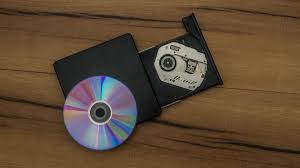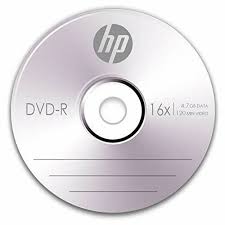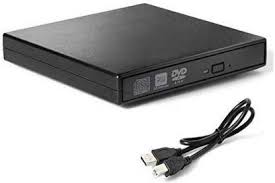Recordable DVD Drives
Recordable and Rewritable DVDs are technologies associated with optical disks. These terms are used for DVD optical disks that can store data using a DVD recorder. In a rewritable disk, the user can erase the current data and rewrite new data on it. Writing the data on an optical disk is referred to as burning the disk. A laser burns the data in recordable disks on the DVD. During disk manufacturing, the data is pressed onto the disk, similarly to a DVD-ROM. This technique of pressing the data is mainly used to manufacture a mass disk. They were used for the distribution of the home video. Similar to CD-Rs, the Recordable DVDs also use a dye to store the data. When a single bit of data is burned in a disk using a layer, the intensity of the layer modifies the reflective properties of the dye. The intensity of the laser is changed frequently. This enables the user to store higher-density data in precise tracks The written tracks are made using darkened dye, and the side of the recordable disk with the data has a different color. There are two methods of writing on the data: pressing the data or burning the data. The disk with burned data has a relatively higher failure rate to read the data from the disk than the pressed DVDs. This is because of the difference between the dye's reflective property and the disk's aluminum substrate. Difference between a Recordable CD and a Recordable DVDThe capacity to store data in a Recordable DVD is higher when compared to a Recordable CD. The higher storage capacity in the DVD-R is achieved by focusing the laser user on writing the data to a smaller point on the disk. This creates smaller pits and a fine-track pitch of the groove spiral. This guides the laser beam on the disk. These two modifications enable the user to create more pits to write in the same physical disk area. This will provide a higher density in the data. The smaller focus of the laser is possible in a DVD by using a red laser with a shorter wavelength of 640nm. The laser used for CD-R is of 780nm wavelength. The red laser uses a lens with a higher numerical aperture. The dyes that are used to store data are different for each case. These dyes are used efficiently for the different wavelengths of the lasers. DVD-R and DVD-RW
Pioneer launched the DVD-R format in 1997. the disk was developed so that they can be used by normal DVD players as well. The DVD Forum also replayed this disk. It provided the user with broader playback compatibility than the DVD-R. They can also be used with traditional DVD players. The DVD-Rash format disks used land pre-pit methods that provided sector address information. According to the DVD-R consortium, using the DVD minus R is inappropriate. It is not a minus, but a dash as the DVD-R and DVD+R technologies are incompatible. So, it started a war in the DVD industry when it was introduced. To end this war and reconcile the competing formats, manufactured produced drives that could work with both these formats. These devices were labeled as DVD±R. These drives became especially popular as they can run both DVD formats. DVD-RW VersionsThere have been multiple versions of DVD-RW. The first version of the DVD-RW was introduced in 1999. Version 1.1 and version 1.2 were launched in 2000 and 2003, respectively. In version 1.2 of DVD-RW, the data writing was not backward compatible. The earlier optical drives were only adapted to work with Version 1.1 and version 1.0 DVD-RW. DVD-RW media are available in different recording speed variants. they were 1x, 2x, 4x and 6x. the 1x variant was discontinued. The higher recording speed variants were also compatible with the lower writing speeds. These disks were written with the lowest error rate at the rated speed. It is similar to the CD-RW. Features of Recordable DVD Drives
The functionality of Recordable DVD DrivesDVD +RW writes the data using a method known as Lossless linking. This method is very efficient as it enables random access to the disk and improves the compatibility of the disk with the DVD players. The rewritable DVD+RW standards were framed before the standards of the non-rewritable DVD+R. They were finally approved by the DVD+RW alliance in 1997. the standards were finally discredited in 2001. They were revised and the capacity was increased from 2.8 to 4.7 GB. But Philips is given credit for formalizing the standards for DVD+RW. There were several distinctions in comparison to the DVD-R/RW/R DL. Some functions were removed from the drives. The stimulated recording mode was removed from the official part of the standard drives. Moreover, the recorder information needs to be written automatically to the DVD+ discs by the drive.
Next TopicWhat is an Alignment
|
 For Videos Join Our Youtube Channel: Join Now
For Videos Join Our Youtube Channel: Join Now
Feedback
- Send your Feedback to [email protected]
Help Others, Please Share










